I decided I'd do a write-up of VI campaigns, starting randomly with one of my favorite factions, the Welsh. Each post will detail the events during the reign of one king. Feel free to move this if necessary -- but since I don't know how to do pics, I didn't think it would quite fit in the "Pics and History" thread. Above all, this is something of a case-study to see how the factions play out.
Some house rules: I play on Expert, and I "turtle". Turtling means different things to different people; for me, it essentially means that I don't rush my neighbors. I prefer to wait until inter-faction wars have started before throwing my troops in. Playing the Welsh this way may seem like suicide, and who knows -- it may in fact turn out that way. This will also be somewhat more of a "bare bones" writeup than others out there; I'm mostly concerned with showing how the campaign plays out rather than fleshing out a lot of character.
Obviously, comments are welcome!
The reign of Caradoc I, the Tyrant, 793-825.
Caradoc I's reign was marked by relative peace, a nation-wide building program, and iron-fisted rule. In his long life he fathered six sons and three daughters. Britain as a whole remained largely peaceful during this period, seeing only the occasional Viking raid upon the Picts far to the north and the conquest of independent rebel territories by larger, more organized neighbors.
In 793 the Welsh nation of Caradoc consisted of only 4 provinces: Clwyd in north Wales, Pouis straddling the mountains in the center of the kingdom, Guent in the south, and Cerniu hanging on stubbornly to the tip of southwestern England, cut off from the rest of Wales . Two rebel territories bordered Caradoc's realm: Guined in the northwest and Defet in the southwest. The lands of Wales were rich in minerals -- Clwyd, Guent, and Cerniu contained iron deposits -- but poor in farmland. Caradoc's first priority was to strengthen his own territories and then to unite the nearby rebel kingdoms under the Welsh banner.
By 796, after building toward Celtic Warriors in Clwyd, Welsh Bandits in Pouis, and Archers in Guent, Caradoc felt secure enough to invade rebel-held Defet. The king led an army composed of 2 Celtic Warriors and 1 Archers -- easily able to handle the rebel army's 2 Archers and 1 Celtic Warriors. After a short battle in which Caradoc himself proved his prowess to his men, the rebels were routed and Defet was brought into the Welsh fold. The rich farmlands of this gently sloping province proved invaluable to the economy of the realm -- for the rest of Caradoc's reign, income per year would hover between 800-900 florins, tripling the per-year income of the first few years and allowing increased production throughout the realm. In keeping with his reputation for rough justice, Caradoc had all the rebels executed after the battle. The remaining population of Defet was cowed, and offered no sign of resistance for the rest of his reign.
With the increased income, Caradoc focused on expanding his building program. Clwyd, with its iron deposits, was developed into a province well-known for its highly trained melee infantry, such as Celtic Warriors and, in later years, Armoured Spearmen. Pouis, as the most developed province, was directed toward the eventual training of Welsh Bandits -- a key unit for a Welsh army, with their ability to hide in the open, their good melee capability, and their long-range, armour-piercing arrows. Guent, known for its Archers, was developed with its iron resources to make Welsh Archers the most feared in Britain. Cerniu, isolated as it was, needed to be able to train anything at the slightest hint of an invasion from the neighboring Saxons. A port and shipbuilding facilities were built in Defet, with the eventual aim of naval production in the Irish Sea. Viking longboats had been sighted off the coast and, although no invasion occurred during Caradoc's reign, the king was aware of Wales' vulnerability to sea attack.
Another characteristic of Caradoc's reign was the establishment of a spy network throughout Wales. After the erection of a Brothel in Pouis, spies were sent out through the countryside and into neighboring regions, such as Mercia's Hwicce and the Saxon-held Sumorsaete. Although attempts were made to discover the secrets of a very disloyal Mercian prince, the only result from such efforts were the prince's development of spy networks of his own and the Welsh spy's eventual demise.
In 800, Domnall III of the Scots offered the hand of his princess, Fenells, to Prince Conan. Caradoc accepted on behalf of his son and a Scots-Welsh alliance was forged. Though the Anglo-Saxon kingdoms offered numerous alliance attempts, Caradoc declined each one, not wanting to get drawn into their dynastic squabbles and risk losing influence of his own. When the Picts sent an emissary in 807, however, asking for an alliance, Caradoc accepted.
In 810 Prince Iago, Caradoc's third son, invaded rebel-held Guined with a force comprised of his own bodyguard, 1 Horsemen, and 1 Celtic Warriors. The rebel army was just as small, with 1 Archers and 1 Celtic Warriors. This battle ended just as the battle for Defet, with the conquest of Guined and the execution of the remaining rebels. For the ordering of this deed, Caradoc became an even more dreaded name among his own people, known now for his tough justice, although his building program and the benefits it brought offset his fearsome reputation.
In 824, thanks to Welsh fleets in the Irish Sea, Caradoc received word that the Northumbrians were in the process of subduing the rebels in the northwestern region of Reget. The rebels were besieged in their fort, but the countryside of Reget remained a hotbed of potential rebellion, with only 44% of the population loyal to the Northumbrian king. Fearing the Northumbrians would gain an upper hand in the north, and sympathetic to his independent British cousins, Caradoc sent a spy by ship to Reget to incite rebellion. The next year his actions were rewarded -- the spy had managed to gather an army of rebel spearmen which attacked the Northumbrians and forced them from Reget altogether.
In 825, at the age of 61, Caradoc died peacefully in Defet, the region he had conquered almost thirty years before. His actions had increased his kingdoms' treasury, allowed the production of improved weapons and armor, and kept his realm at peace with its neighbors. To the east, however, the Mercians and Saxons eyed each other warily across the Thames. If war breaks out in Britain, the Welsh will need a strong leader.
In 826, Caradoc's eldest son, Conan, the husband of a Scottish princess, ascended the throne.




 Reply With Quote
Reply With Quote







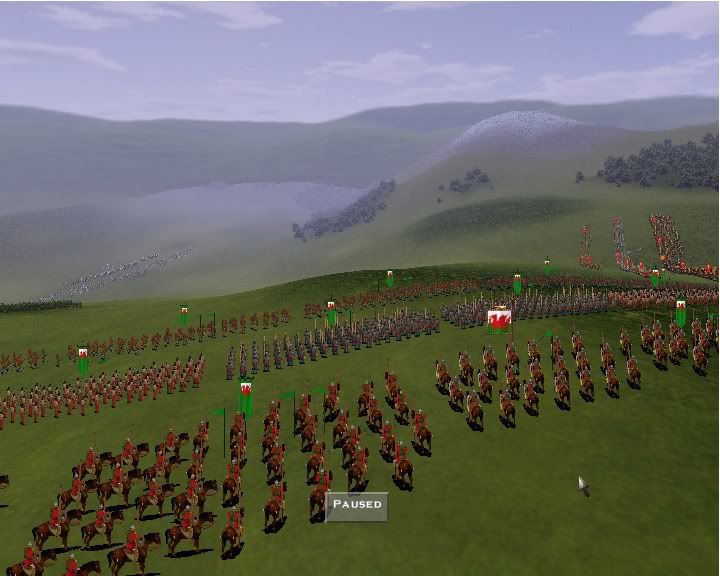
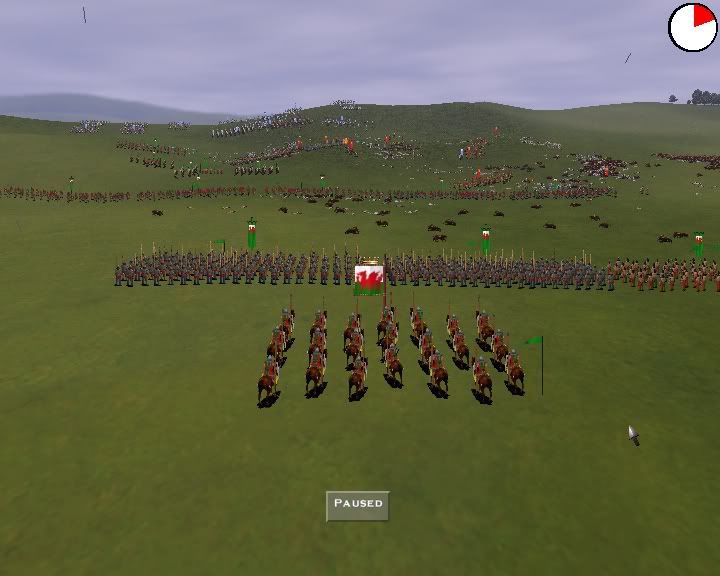
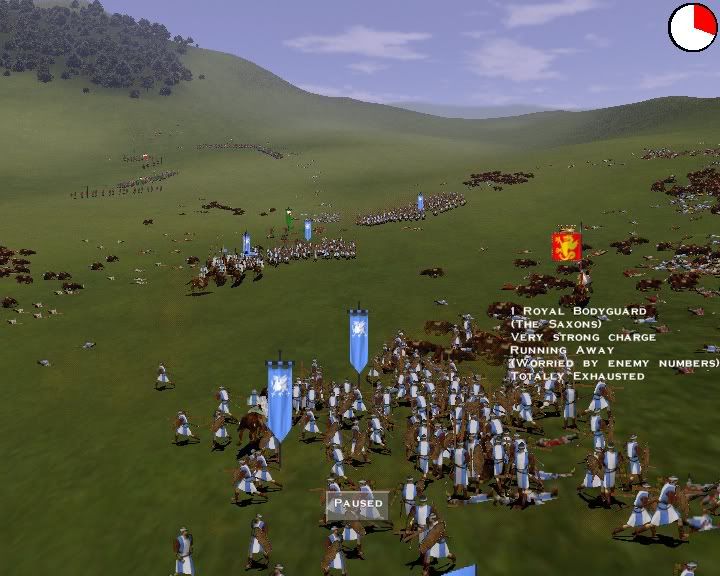
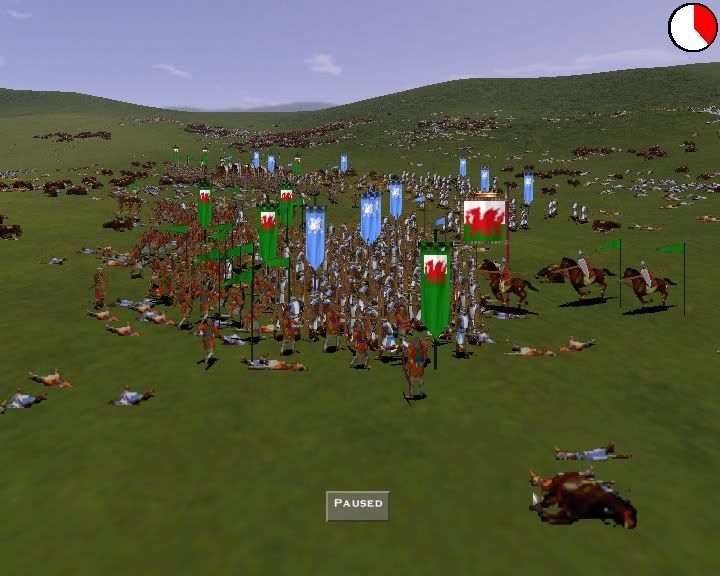


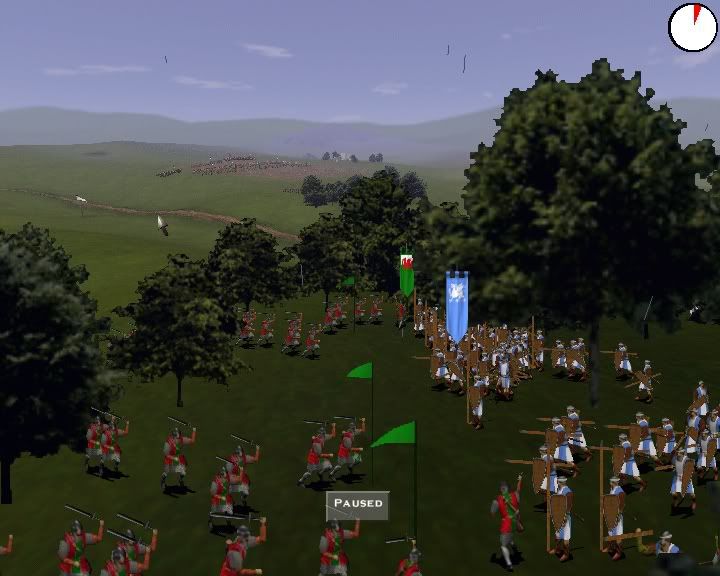
 Welsh scouts brought the news to Cadwallon in West Seaxe and he ordered the immediate devastation of the countryside. Nothing was safe from the torch, and the greedy flames fed even upon the wood and stone of the humble Abbey in the region.
Welsh scouts brought the news to Cadwallon in West Seaxe and he ordered the immediate devastation of the countryside. Nothing was safe from the torch, and the greedy flames fed even upon the wood and stone of the humble Abbey in the region.


Bookmarks